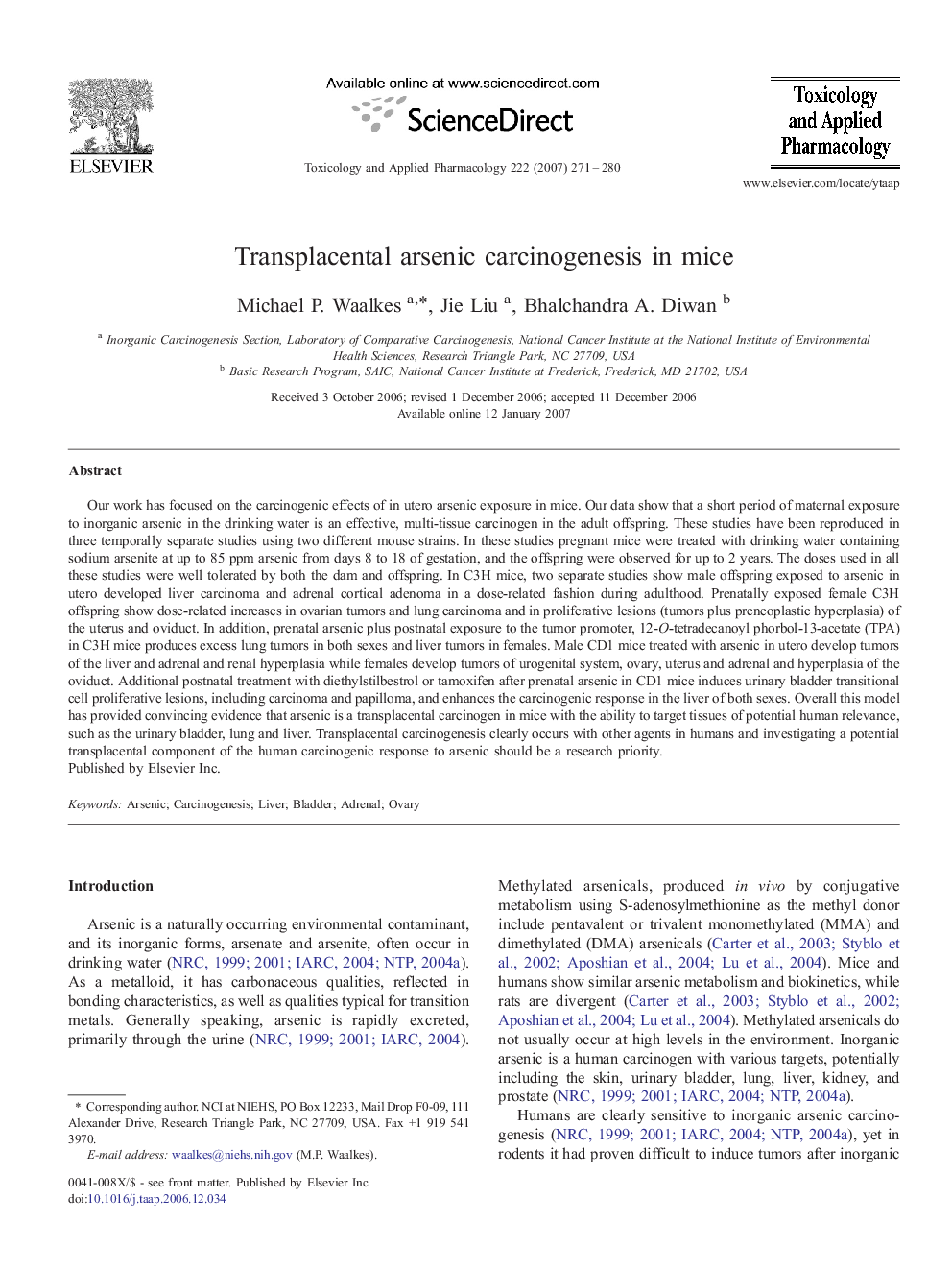| کد مقاله | کد نشریه | سال انتشار | مقاله انگلیسی | نسخه تمام متن |
|---|---|---|---|---|
| 2571150 | 1128619 | 2007 | 10 صفحه PDF | دانلود رایگان |

Our work has focused on the carcinogenic effects of in utero arsenic exposure in mice. Our data show that a short period of maternal exposure to inorganic arsenic in the drinking water is an effective, multi-tissue carcinogen in the adult offspring. These studies have been reproduced in three temporally separate studies using two different mouse strains. In these studies pregnant mice were treated with drinking water containing sodium arsenite at up to 85 ppm arsenic from days 8 to 18 of gestation, and the offspring were observed for up to 2 years. The doses used in all these studies were well tolerated by both the dam and offspring. In C3H mice, two separate studies show male offspring exposed to arsenic in utero developed liver carcinoma and adrenal cortical adenoma in a dose-related fashion during adulthood. Prenatally exposed female C3H offspring show dose-related increases in ovarian tumors and lung carcinoma and in proliferative lesions (tumors plus preneoplastic hyperplasia) of the uterus and oviduct. In addition, prenatal arsenic plus postnatal exposure to the tumor promoter, 12-O-tetradecanoyl phorbol-13-acetate (TPA) in C3H mice produces excess lung tumors in both sexes and liver tumors in females. Male CD1 mice treated with arsenic in utero develop tumors of the liver and adrenal and renal hyperplasia while females develop tumors of urogenital system, ovary, uterus and adrenal and hyperplasia of the oviduct. Additional postnatal treatment with diethylstilbestrol or tamoxifen after prenatal arsenic in CD1 mice induces urinary bladder transitional cell proliferative lesions, including carcinoma and papilloma, and enhances the carcinogenic response in the liver of both sexes. Overall this model has provided convincing evidence that arsenic is a transplacental carcinogen in mice with the ability to target tissues of potential human relevance, such as the urinary bladder, lung and liver. Transplacental carcinogenesis clearly occurs with other agents in humans and investigating a potential transplacental component of the human carcinogenic response to arsenic should be a research priority.
Journal: Toxicology and Applied Pharmacology - Volume 222, Issue 3, 1 August 2007, Pages 271–280